Today was our last full day at the Estación científica Las Joyas. We started off the day like every other- the few early riser when out to bird watch, while others took advantage of the extra few minutes of sleep. At 8am we all gathered in the dining room for some delicious breakfast enchiladas and fruit; coffee included of course. After finishing up our meal, we started preparing our packs to hitch a ride to the top of the mountain in pickup trucks. Throughout the drive up, we observed the flora get more coniferous at higher elevations. There was a variety of flowering plants with unique and beautiful colours that differed from the flora at the lower altitude of Las Joyas. When we arrived at the top, we were amazed with the view. As we gazed out from the mountain we could see for miles. The mountain was so high up that we were virtually level with the clouds. We spent some time here taking photos and basking in the glory of the spectacular view. After a sufficient amount of picturesque views, we rearranged ourselves for the 2 hours trek back to the station. Before leaving the mountain, we were able to see a diverse variety of hummingbirds. On the hike down, we kept our eyes peeled and vigilantly flipped rocks in hopes of finding snakes or salamanders- sadly, we did not find any. We did however get to see a female Guan with a vibrant red throat. She walked in front of us on the trail for quite some time and we were able to get some good snaps. Following the hike, we were given time to complete data collection needed for our final projects. Our group is studying how the location of zea diploperenus correlates to the position of the sun on disrupted man-made paths (west/east and north/south). At 2:30 we returned and washed up before lunch. Lunch was served at 3pm as always. There was a delicious corn stew served to all, with chicken for the omnivores and mushrooms for the herbivores. Following this we had about an hour of repose before we returned to the field to collect our last set of data samples. We returned at 5:30pm for a brief lesson on statistical analysis, then headed up to a cabin for three more seminars presented by Jamie, Leah, and Kayleigh. The seminars sparked some very interesting conversations about ecotourism, agriculture, and the effects of the formation of the isthmus of Panama. We went down to have dinner at 8pm. To our delight, we were treated to a tasty noodle and veggie dish. Then students who wished could join Steve and Javier in the bat hunt. We hiked up into the near forest, where we turned off all our head lamps. Javier used prerecording of owl sounds to summon the owl. We successfully induced a smaller owl to respond (Eastern screech owl). Alas, no larger owls were fooled by our tricks. The long and sensational day warranted for a good night’s sleep. We will be sad to be leaving Las Joyas tomorrow morning, but are excited for the adventure that Autlan and Chamela have in store for us!
En español
Hoy fue nuestro ultimo día complete en la Estación Científica Las Joyas. Comenzamos nuestro día como los anteriores, los tempraneros nos fuimos a observar aves, mientras otros aprovecharon para dormir unos minutos más. A las 8am nos reunimos en el comedor para un delicioso deayuno de enchiladas verdes y fruta, sin faltar el café por supuesto. Después del desayuno, nos fuimos a preparar mochilas para una excursión hacia las montañas en un viaje sinuoso y agitado por las montañas en la camionetas pickup. Durante el viaje observamos que la vegetación dominante a mayor elevación era de bosque de pinos. Observamos una variedad interesante de plantas con flores con colores diversos y únicos, diferente a las plantas observadas a elevaciones más bajas en las Joyas.
Cuando llegamos a la cima nos sorprendimos con la maravillosa vista desde donde podíamos ver el paisaje por millas. Estábamos a tal Altura que literal, estábamos al nivel de las nubes. Pasamos un buen rato explorando y tomando muchas fotos mientras tomábamos el sol en el sitio con tan gloriosa y espectacular vista. Después de nuestra sesión de fotos, nos reunimos para iniciar nuestro descenso caminando por alrededor de dos horas hacia la Estación Científica. A lo largo de nuestra caminata, nos mantuvimos vigilantes, al mismo tiempo que levantamos piedras y troncos en búsqueda de serpientes, salamandras u otros animales de los cuales tristemente no encontramos ninguno.
No obstante, pudimos observar un Choncho (Penelope purpurascens) con una garganta roja muy brillante. Pudimos observarla por un buen tiempo mientras permanecia el sendero y tomar muchas fotos. Después de nuestra llegada se nos dío tiempo para poder continuar con la toma de datos para los Proyectos. Nuestro equipo decidió analizar como el teozintle (Zea diploperennis) se relaciona a la posición de coordenadas geográficas y la relación con la radación solar sobre caminos y veredas usadas por humanos. Regreamos a las 2:30 para lavarnos antes de comer. Comimos a las 3pm como siempre. Nos sirvieron una sopa de elote con pollo para los omnívoros y con hongos para los herbívoros. Después de la comida tuvimos una hora de Descanso antes de regresar a nuestros sitios de trabajo de campo para colectar más datos. Ya a nuestro regreso a las 5:30pm, tuvimos una pequeña clase sobre análisis estadísticos y luego al salón de clases para escuchar tres seminarios más presentados por Jamie, Leah y Kayleigh. Los seminarios trataron temas muy interesantes sobre el ecoturismo, agricultura y el intercambio de fauna durante la formación del Istmo de Panamá. A las 8:00pm nos fuimos a cenar un delicioso platillo de fideos con vegetales asados. Mientras unos se quedaron a limpiar la cocina, otros se unieron con Javier y Steve para la captura de murciélagos. Poco después, nos reunimos para ir a buscar tecolotes usando unas grabaciones que Javier usa como señuelo para atraerlos. Tuvimos éxito en atraer a un Búho oriental pequeño (Psiloscops trichopsis). Otros búhos grandes no respondieron a los llamados. El largo día pero sensacional nos garantizó una Buena noche para dormir. Estamos tristes de que nos iremos de las Joyas mañana en la mañana, pero a la vez emocionados de la siguientes aventuras que nos esperan en Autlan y Chamela !
- Rufous hummingbird
- Red-headed tanager
- Emily holding on to her hat
- Audubon’s oriole
- As yet to be identified butterfly
- Mexican silverspot
- Magnificent swallowtail
- Orchid on the road from the mirador

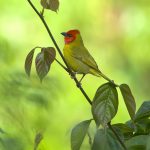
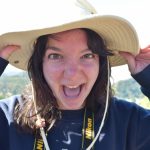
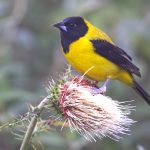
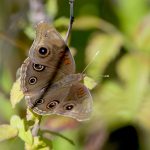
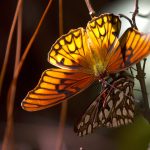
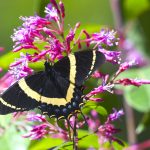
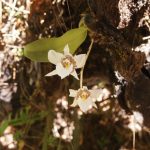
Leave a Reply